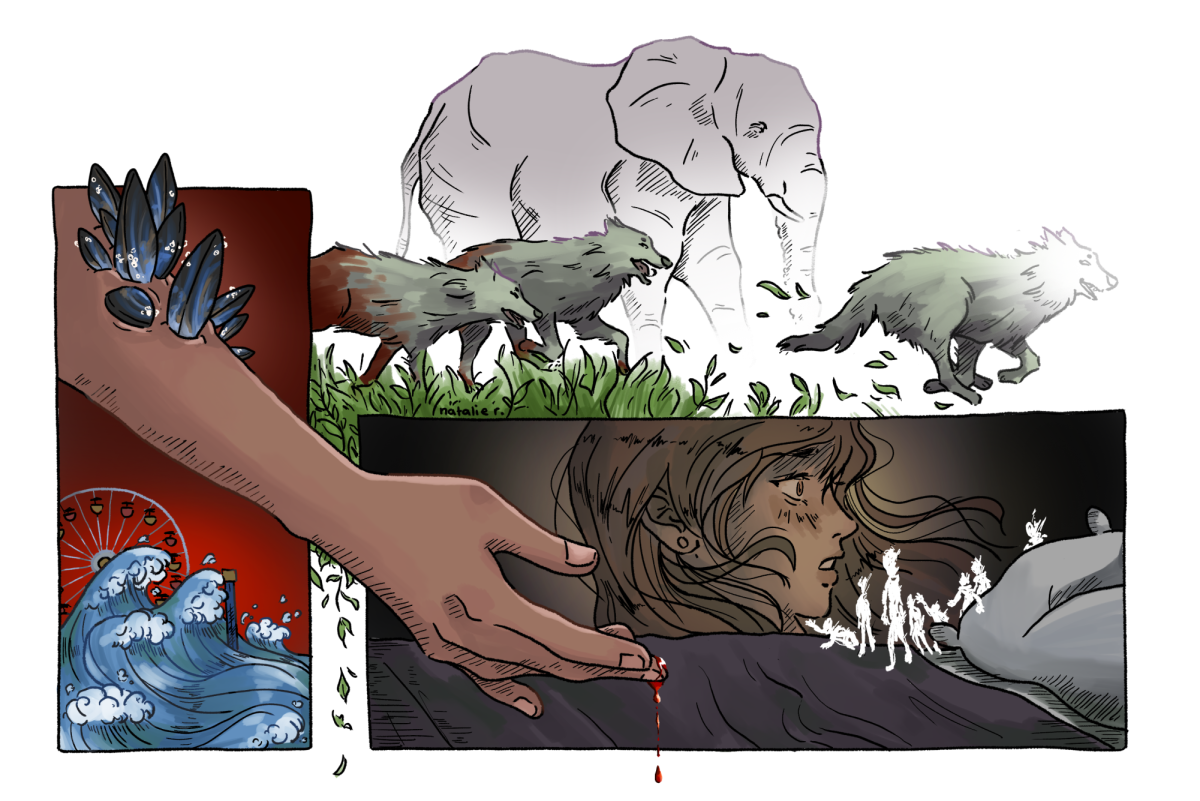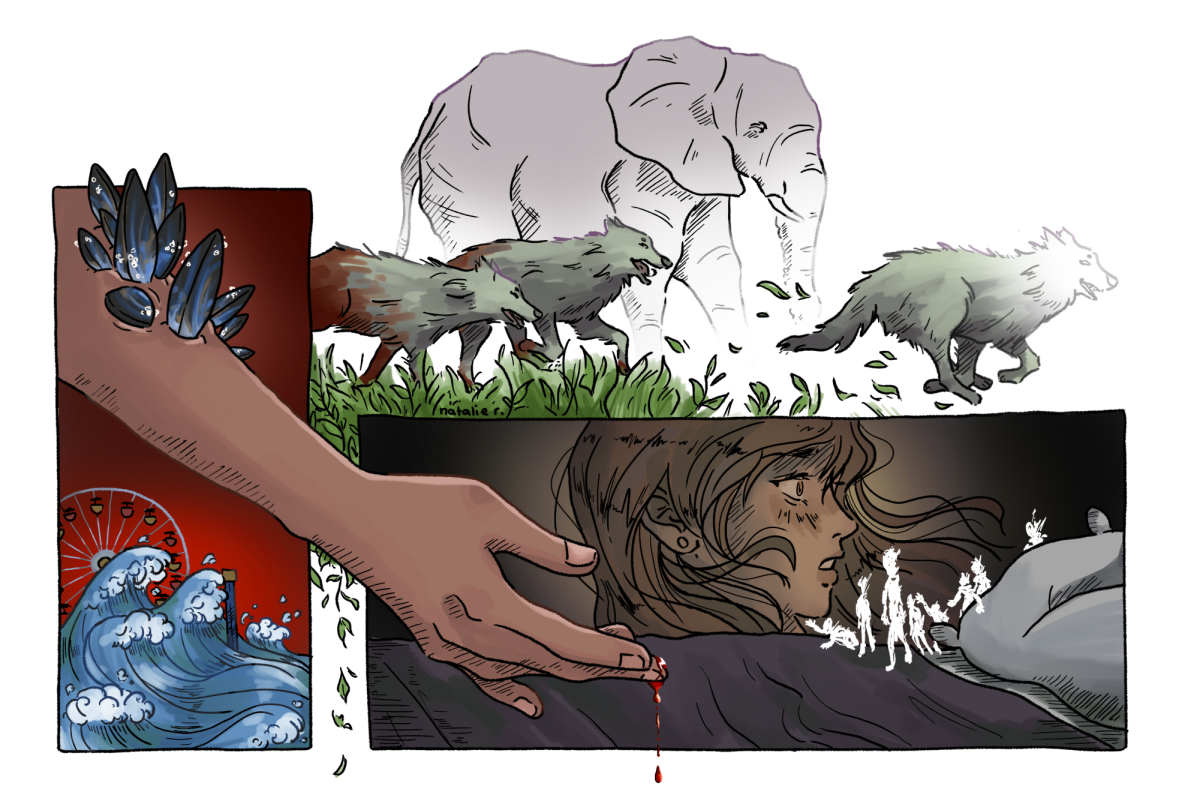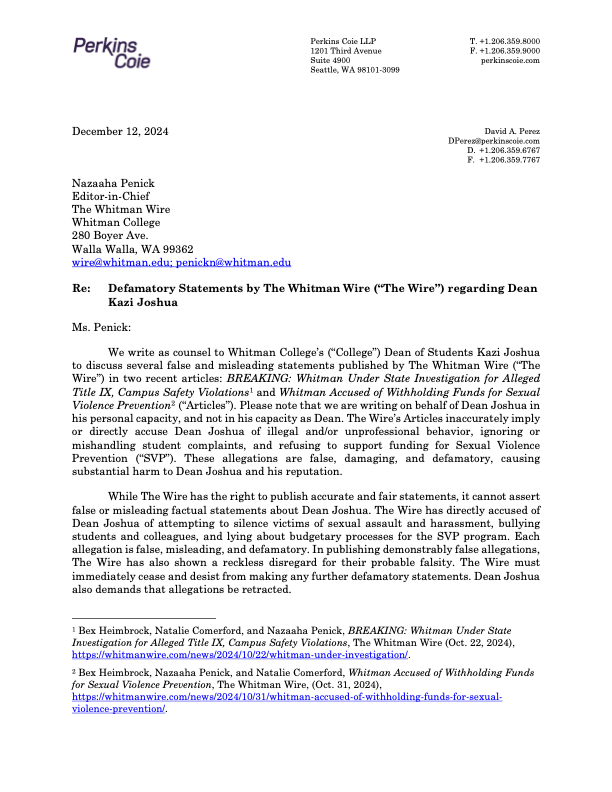When researchers on the Karahoa fished up a previously undiscovered “supergiant” amphipod off the coast of New Zealand last fall, senior Mackenzie Gerringer was on board to witness the momentous occasion.
The trip was a part of a research project being undertaken by an international group of scientists that includes Whitman’s own Professor of Biology and Carl E. Peterson Endowed Chair of Sciences Paul Yancey. Yancey sent Gerringer, who is working on her biology thesis in his lab, to collect data in his stead.

“Professor Yancey was originally supposed to go collect the samples,” she said. “He was unable to make the trip, so I got a really amazing opportunity,” she said.
The expedition, which took place in late November and early December of last year, focused on gathering specimens from the Kermadec Trench in the waters north of New Zealand. At over 30,000 feet in depth, the trench is one of the deepest spots on Earth. Yancey and his colleagues are aiming to understand more about how life is able to survive in these extreme conditions.
“The deep sea is kind of an enigma,” said Yancey. “We don’t know much about what happens to everything down there. In my lab we’re trying to analyze the tissues to see what [the animals are] made out of, we’re trying to see how they survive pressure. The other people I’m working with are studying ecology and how animals interact with each other and what they’re eating. It’s a big project.”
At 11 inches long, the newly discovered amphipod completely dwarfs typical one-inch specimens of its kind. According to Yancey, the amphipod illustrates an unexplained phenomenon called deep-sea gigantism, which is common in deep-sea creatures.
“There’s this phenomenon where things in the deep sea often get huge, like the giant squid. We didn’t know that [the amphipod] lived down there, but that’s the biggest of that kind of animal ever found. And we don’t know why that is,” he said.
Yancey is preparing to undertake his own trip to Kermadec and other key locations sometime in the next year, which will employ a robotic submarine to explore and collect samples from the depths. Yancey says he plans to bring a student on this trip as well.
According to Gerringer, daily life aboard the research vessel was both a challenge and a thrill.
“We were on the water for 12 days. For most of the voyage, we were completely out of sight of land,” she said. “Everything you do on the ship is made slightly more complicated because it rolls and pitches so much. Things like dissecting, writing, eating, climbing out of your bunk, even walking, become a challenge.”
Still, she said the experience was well worth it.
“This is the type of thing I’ve been dreaming about since I was a kid. I’m really passionate about the research, and this trip reaffirmed my desires for a career in marine biology. Just about every time scientists look in the deep sea, they find something new. There’s just so much out there that we haven’t seen yet. The amphipod is another example of the strange and wonderful things waiting to be discovered in the deep places of the earth.”











